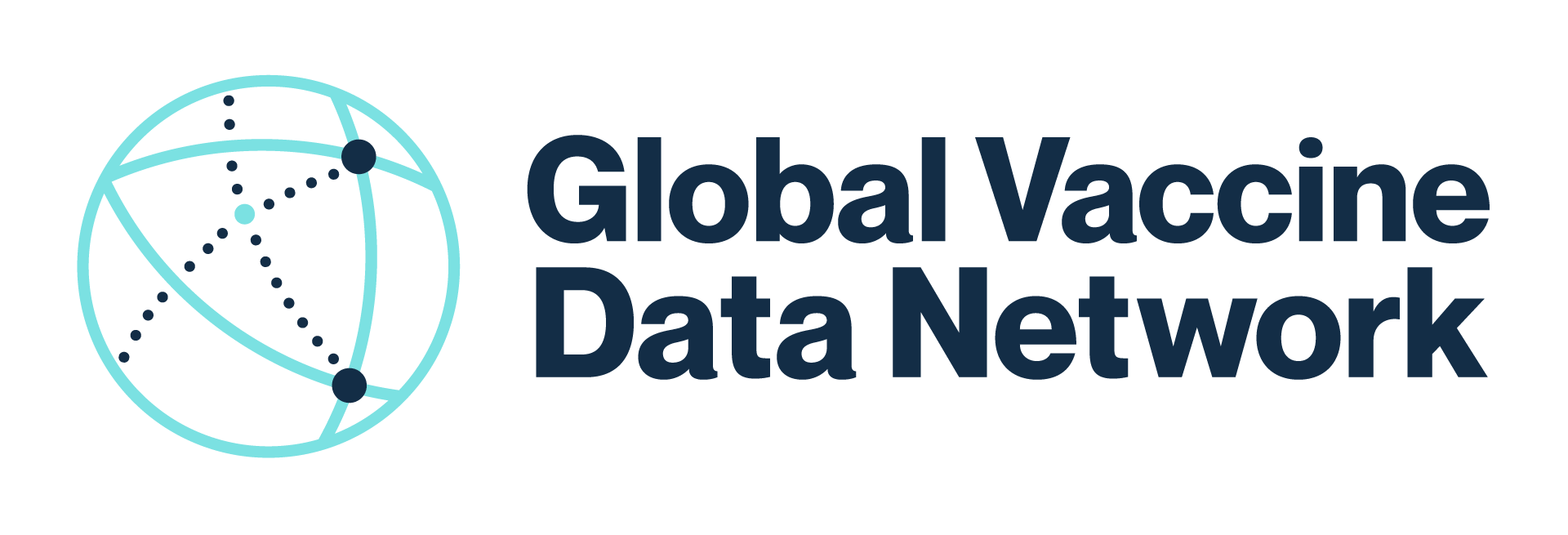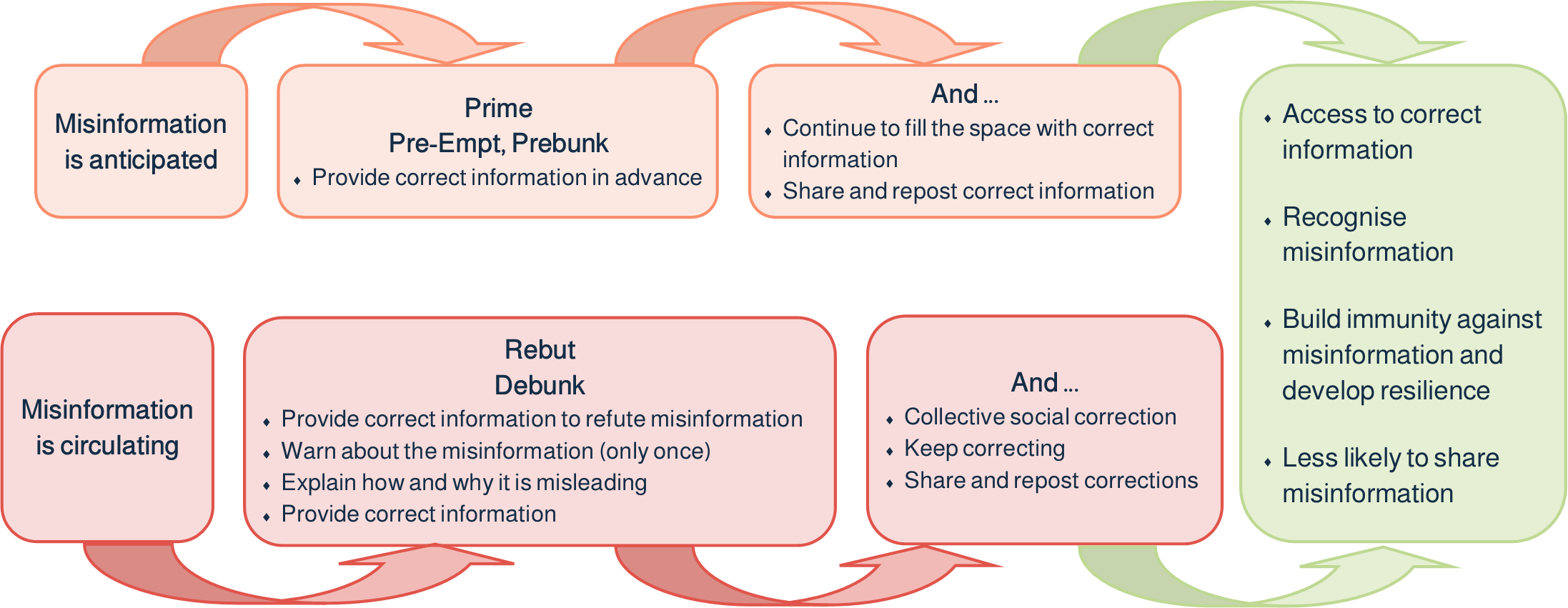- We need to build community recognition of how misinformation spreads and the tactics used to manipulate audiences into believing it.
- Prebunking and debunking are effective techniques to respond to the surge and rapid dissemination of misinformation.
- Provision of correct information can be done by experts and non-experts ‘on-the-spot’.
- It is essential that vaccine communications employ the most effective techniques first time, every time.
Misinformation is wrong or false information. It can be spread accidentally, perhaps the person doesn’t realise the information was wrong, or it can be spread intentionally to mislead and/or manipulate others (disinformation). Here, the term misinformation is about wrong or false information whether it was spread accidentally or intentionally.
The spread of health misinformation is a significant risk for global public health through its negative effects on health-related behaviours. Misinformation can increase vaccine hesitancy and decrease vaccination rates, leaving people susceptible to disease with their associated risks and disease outbreaks in our communities.
Misinformation is not new. Its spread was increasing with the rise of social media before the COVID-19 disease pandemic. A review of true and false stories shared on Twitter from 2006–2017 showed that true news was rarely shared with more than 1,000 people, but false news routinely spread to 1,000–100,000 people.
However, arrival of the pandemic contributed to a global surge in the spread of misinformation. During the pandemic, the volume of information (infodemic), confusion, heightened human emotions such as fear and anxiety, mistrust, the ability of social media to spread false information rapidly and widely, and apply algorithms that created echo chambers.
The surge and rapid dissemination of misinformation means it is essential that vaccine communications employ the most effective techniques first time, every time. Debunking is one of these, provision of correct information can be done by experts and non-experts ‘on-the-spot’.
How can health professionals help others develop misinformation immunity?

Build resilience
Improve community knowledge about how misinformation spreads and how to recognise the tactics used by those deliberately spreading to manipulate the audience into reading more and believing the misinformation. Encourage people to ‘Pause before you share’, reduce accidental spread of misinformation.
Prebunk
Prime, Pre-Empt,
If we can predict what misinformation may be about circulate, we can get a head start and prime the audience by delivering factual, easy to understand information. The opportunity to pre-empt (prebunk) misinformation can make it harder for misinformation to get support.
Debunk
Public rebuttal
Once misinformation is circulating, we need to take every opportunity to rebut it. Debunking (exposing the sham, taking the nonsense out) has been shown to have a positive impact on the intent to receive vaccines.
While the credibility of the and trustworthiness of the corrector is important, experts and non-experts can provide effective social correction (correction of misinformation on social media) when they rebut with factual information. On social media, it may be as simple as posting the correct information in a reply to the misinformation. But if the misinformation being corrected isn’t as obvious, we can follow these best-practice recommendations:
- Provide the correct information
- Lead with the facts
- Warn about the misinformation
- But only once
- Expose the manipulation techniques being used
- Explain how and why the misinformation is wrong
- Provide the correct information again
- End by reinforcing the facts and provide a credible alternative explanation
The debunking technique has been challenged in the past with the suggestion that repeating the misinformation during the debunking process backfired by increasing familiarity with it instead. Evidence is mounting against this happening for the vast majority of misinformation recipients, with the exception of a small group of highly vaccine sceptical people.
Build community knowledge
- Access to correct information
- How misinformation spreads
- Recognise tactics used to manipulate the audience
- Encourage people “Pause before you share”
Test yourself with these online games. Can you recognise the different tactics used to manipulate the audience into believing misinformation?
Useful resources
![]() Countering vaccine misinformation. A practical guide for healthcare professionals. Research Review Educational Series. 2021.
Countering vaccine misinformation. A practical guide for healthcare professionals. Research Review Educational Series. 2021.
![]() Misinformation alerts. Public Health Communications Collaborative.
Misinformation alerts. Public Health Communications Collaborative.
References
- Bautista JR, Zhang Y, Gwizdka J. Correcting vaccine misinformation on social media: Effect of social correction methods on vaccine skeptics’ intention to take COVID-19 vaccine. New Media Soc 2023; 19(14614448231169697). https://www.ncbi.nlm.nih.gov/pmc/articles/PMC10200812/
- Ecker UKH, Sharkey CXM, Swire-Thompson B. Correcting vaccine misinformation: A failure to replicate familiarity or fear-driven backfire effects. PLOS ONE 2023; 18(4): e0281140. https://pubmed.ncbi.nlm.nih.gov/37043493/
- Kotz J, Giese H, König LM. How to debunk misinformation? An experimental online study investigating text structures and headline formats. British Journal of Health Psychology 2023; 00: 1-16. https://pubmed.ncbi.nlm.nih.gov/37263771/
- Lewandowsky S, Cook J, Ecker UKH, et al. The Debunking Handbook 2020. Available from: https://sks.to/db2020
- van der Linden S. Misinformation: susceptibility, spread, and interventions to immunize the public. Nature Medicine 2022; 28(3): 460-7. https://pubmed.ncbi.nlm.nih.gov/35273402/
- Vosoughi S, Roy D, Aral S. The spread of true and false news online. Science 2018; 359(6380): 1146-51. https://pubmed.ncbi.nlm.nih.gov/29590045/

